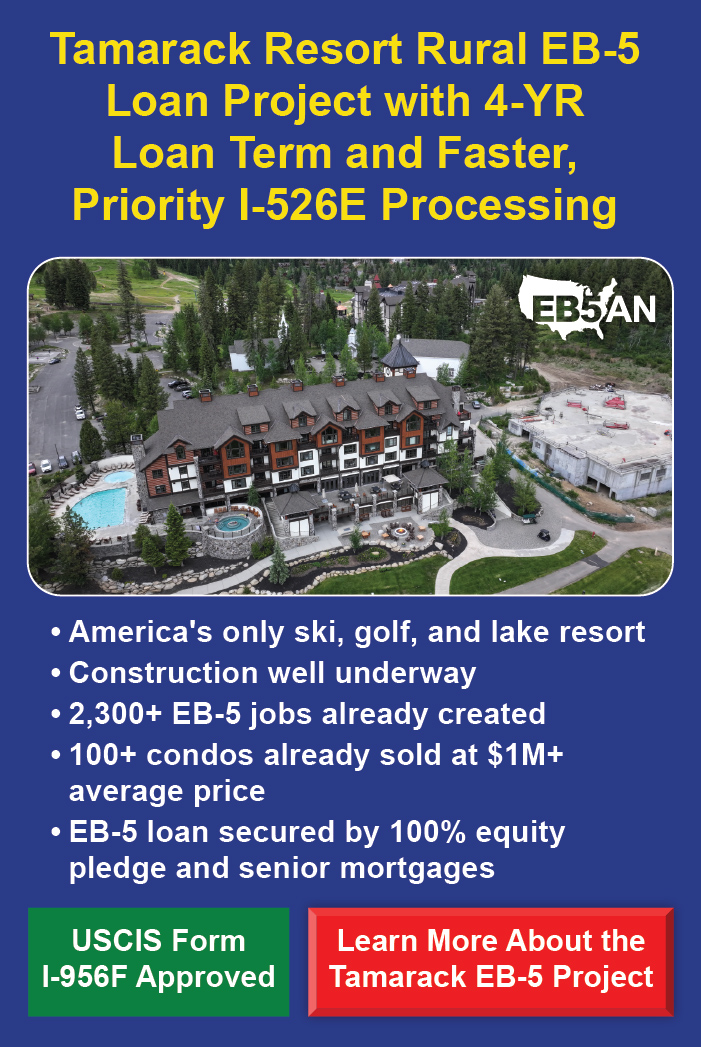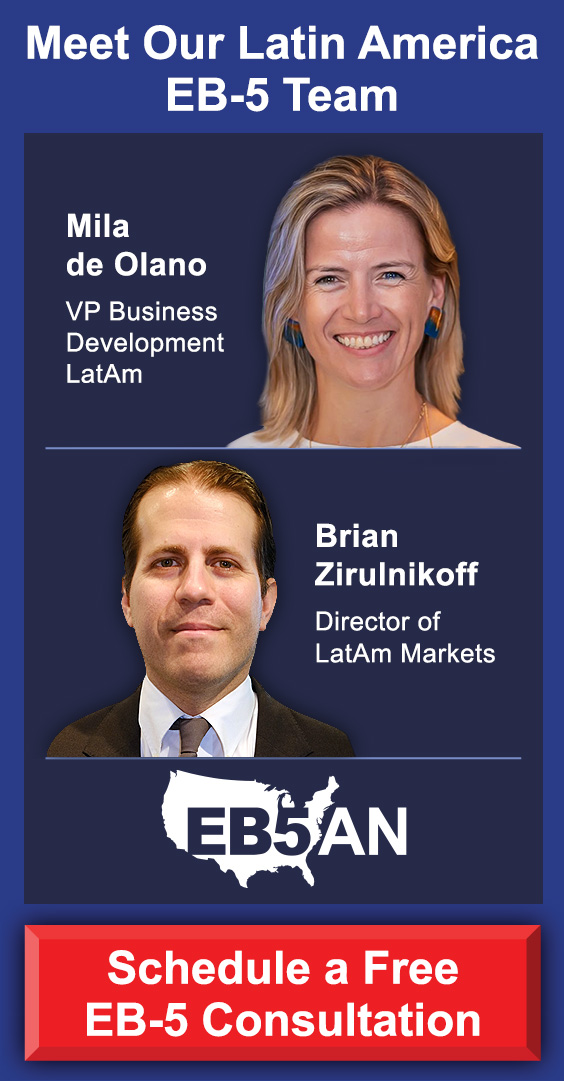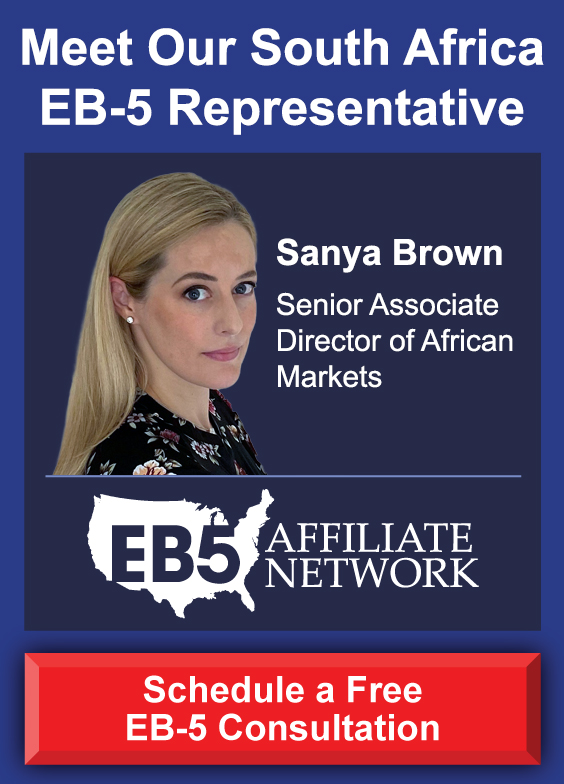Families of Deceased EB-5 Applicants Can Still Obtain Residency
What Is an EB-5 Visa?
- Why is knowing what to do when an EB-5 investor dies important?
- 💡 Get professional support
- The EB-5 immigration petition process
What Action to Take When the Principal Applicant Dies
- Death before I-526E petition approval
- Death during the two-year period of conditional lawful permanent residence
What Does the Legislation Governing EB-5 Say?
- What is a qualifying relative in EB-5 petitions?
- What are EB-5 residency requirements?
- The process for recent marriages
- USCIS has the discretion to deny a petition
Can Bereaved Families of EB-5 Applicants Get Their Investment Back?
Speak with an EB-5 Professional Today
FAQ
Families of Deceased EB-5 Applicants Can Still Obtain Residency
- What Is an EB-5 Visa?
- The EB-5 Immigration Petition Process
- What Action to Take When the Principal Applicant Dies
- Death Before I-526e Petition Approval
- Death During Two-Year Period of Conditional Lawful Permanent Residence
- What Does the Legislation Governing EB-5 Say?
- What Is a Qualifying Relative in EB-5 Petitions?
- What are EB-5 Residency Requirements?
- The Process for Recent Marriages
- USCIS Has the Discretion to Deny a Petition
- Can Bereaved Families of EB-5 Applicants Get Their Investment Back?
- Speak With an EB-5 Professional Today
- FAQS
Are you applying for a U.S. Green Card? Are you concerned about what will happen to your family’s immigration status should you pass away? Or have you lost a family member who was the principal applicant?
Losing a loved one is painful enough without added uncertainty over your immigration status.
The good news is that the families of principal applicants who have passed away can still complete the process and get their Green Cards as long as they fulfill certain requirements.
This article explains what those requirements are and what steps families should take if the principal applicant dies during the visa process.
This article will focus on options for applicants in the EB-5 Immigrant Investor Program whose family members have passed away.
What Is an EB-5 Visa?
An EB-5 visa is a Green Card granted to an investor who has made a qualifying investment in a U.S. commercial enterprise and met all the requirements stipulated by the EB-5 visa program.
The principal applicant, their spouse, and unmarried children under 21 are eligible to receive Green Cards. Green Cards allow an investor and their qualifying family members to become lawful permanent residents of the United States.
Why is knowing what to do when an EB-5 investor dies important?
For various reasons, the EB-5 application process can take several months to several years from start to finish. This is especially true for applicants from countries with waiting lists for EB-5 visas, like China, Vietnam, and India.
Even investors from countries without visa backlogs may have to wait a significant period of time to see their EB-5 applications processed and approved. Applying to the EB-5 visa program requires many steps that must be completed carefully, a process that can in itself be time-consuming for the investor.
Because the EB-5 process is long and life is unpredictable, EB-5 investors sometimes pass away before their applications have been completely processed.
In cases like these, on top of their grief, bereaved family members often worry about the uncertainty of their lawful permanent resident status.
If the principal applicant dies during the EB-5 Green Card process, qualifying family members can still gain U.S. residency through the same application.
The stage of this application process you are at when the principal applicant dies will determine the action their family needs to take to gain residency.
💡 Get professional support
Losing a loved one is a difficult time in anyone’s life. The stress of trying to take over the principal applicant’s EB-5 process is complex and could prove overwhelming.
We recommend getting professional support from an EB-5 consultancy like EB5AN. Schedule a call today and we’ll answer your questions and ensure your EB-5 immigration petition continues.
The EB-5 immigration petition process
Here’s a broad summary of the EB-5 application process:
- Make a qualifying investment in a commercial enterprise in the United States.
- Either file Form I-526E, or the I-562 visa petition along with proof that a qualifying investment has been made.
- Upon approval of the Form I-526E visa petition, an investor and their family members become conditional permanent residents and receive temporary Green Cards that last for two years. If the EB-5 investor and family already live in the United States under a non-immigrant visa, they file Form I-485 simultaneously with Form I-526.
- Near the end of that two-year period, an investor must submit Form I-829 to United States Citizenship and Immigration Services (USCIS). This proves that they have met EB-5 program requirements.
- Upon approval of Form I-829, the primary applicant and their family members have conditions removed from their permanent residency.
- An EB-5 investor can apply for full citizenship five years after being granted full permanent residency status.
What Action to Take When the Principal Applicant Dies
Here’s an overview of what action family members should take at each stage of the application process, should the principal applicant pass away.
| Residency application stage | Action to take if principal applicant dies |
| Qualifying investment made. | Depending on the terms of their investment, the family members may be able to:
|
| Form I-562E, or I-526 has been submitted. | A qualifying family member can write to the USCIS office that handles their petition to inform them of the petitioner’s death and ask for the application to be transferred to them. The qualifying family member must meet their petition’s residency requirements. |
| Form I-562E or I-526 or similar temporary visa petition approved and temporary Green Cards issued. | See above. |
| You are about to submit Form I-485. | Submit Form I-485 and supporting evidence of the EB-5 investment as the previous primary applicant would have. The form provides instructions for the spouse and children of a deceased EB-5 investor. |
You have submitted Form I-485. | A qualifying family member can write to the USCIS office that handles their petition to inform them of the death of the primary applicant and ask for the petition to be transferred to them. The qualifying family member must meet their petition’s residency requirements. |
| You are about to submit Form I-829 to remove the conditions on your permanent residency. | Submit Form I-829 and supporting evidence of the EB-5 investment as the previous primary applicant would have. The form provides instructions for the spouse and children of a deceased EB-5 investor who are currently conditional permanent residents. |
Death before I-526E petition approval
If the primary EB-5 applicant died before the approval of the Form I-526E visa petition, the application or petition could still be approved if at least one family member meets residency requirements, which will be explained later in the article.
Death during the two-year period of conditional lawful permanent residence
If an investor dies during the two-year conditional permanent residency period, family members will still be eligible to have the conditions removed from their lawful permanent resident status. Near the end of the two-year period, family members will need to submit Form I-829, just like the EB-5 investor would have had to do. There is a section on Form I-829 that includes instructions for the spouse and children of a deceased EB-5 investor who are currently conditional permanent residents.
Along with Form I-829, a deceased EB-5 investor’s spouse (likely the new principal beneficiary/substitute sponsor) and children will need to provide proof that all EB-5 visa program requirements have been met, just as the primary applicant would have needed to do. This means family members will have to provide proof that EB-5 funds were legally acquired, that 10 jobs were created by the investment, and that funds remained at risk.
EB5AN can provide guidance on the types of paperwork that can be supplied to United States Citizenship and Immigration Services to prove these requirements have been met. The family of a deceased investor is also advised to submit the investor’s permanent residency card and death certificate with Form I-829.
What Does the Legislation Governing EB-5 Say?
In 2009, Section 204 l of the Immigration and Nationality Act (INA 204 l) was introduced to account for the case of a principal EB-5 applicant dying and leaving behind surviving family members who were included on their EB-5 application.
INA 204(I) stipulates that the principal applicant must meet the requirements of a “qualifying relative” for family members to be able to petition to be approved for permanent residency.
What is a qualifying relative in EB-5 petitions?
A “qualifying relative” is a person who has died shortly after applying for the EB-5 visa program, and a surviving relative may become a substitute sponsor/principal beneficiary in the EB-5 immigration process.
It is important to note that “qualifying relative” applies to the deceased EB-5 applicant, not their family members. This language can sometimes be confusing.
A person counts as a deceased qualifying relative if they’ve applied to the EB-5 visa program shortly before their death. This applies to applicants whose petitions are pending, as well as those whose petitions have been approved at the time of death.
What are EB-5 residency requirements?
For family members to have a chance at having their petition or application approved after the death of a qualifying relative, specific residency requirements must be met. Family members must:
- Have lived in the United States at the time of the qualifying relative’s death.
- Be living in the United States at the time the petition or application is approved after the qualifying relative’s death.
Not every family member needs to be included in the qualifying relative’s application to meet the residency requirement. If only one family member meets the residency requirement, all family members may still be approved for residency.
If a family member was temporarily absent from the United States on a trip abroad at the time of the principal applicant’s death, they may still meet the residency requirement as long as the United States is their primary place of residence.
Relatives of a deceased EB-5 investor may need to submit an Affidavit of Support (Form I-864). This document proves that the family member will likely not become a public charge in the United States—in other words, someone who relies on the government for subsistence or long-term care. Family members should consult an immigration attorney to learn whether this form is required in their case.
The process for recent marriages
The process for obtaining lawful permanent residence when the principal applicant dies may be slightly more complicated in the case of a recent marriage. In these cases, United States Citizenship and Immigration Services will conduct an investigation to verify that the marriage was legitimate before the conditions are removed from the spouse’s permanent residency. This is to prevent people from obtaining green cards through fraudulent marriages.
USCIS has the discretion to deny a petition
Meeting all the requirements discussed above does not guarantee that United States Citizenship and Immigration Services will approve a pending petition or applications by deceased EB-5 investors’ family members.
All this means is that USCIS will consider the case. Ultimately, USCIS has complete discretion to determine whether the dependents of a deceased investor will be able to become permanent residents.
Family members’ applications can be denied for any reason. A deceased EB-5 investor’s surviving family members should speak to an immigration attorney who can help them understand their options.
Can Bereaved Families of EB-5 Applicants Get Their Investment Back?
Because each situation is different and multiple factors go into determining whether family members will be approved for unconditional permanent residency, this process is not always straightforward.
The process differs slightly between regional center investments and direct investments. Most EB-5 investors choose to invest in regional center projects, because the process of proving job creation is significantly less intensive for these investments than for direct investments.
The regional center investment model is also often the best path for EB-5 investors to meet their primary goal of immigrating to the United States.
Many regional center project investments are structured as limited partnerships. EB-5 investors are limited partners who have a say in policy-making.
This is because limited partnership satisfies the qualifications for an EB-5 visa, and these types of arrangements are often most convenient for EB-5 investors. Because EB-5 investors in regional center projects are often limited partners, they will have a Limited Partnership Agreement with the regional center that outlines the terms of their partnership and their liability.
In the case of an investment in a regional center project, the Limited Partnership Agreement will be an important factor in determining the outcome of an EB-5 investment after the investor’s death. A Limited Partnership Agreement contains terms that stipulate what happens when an EB-5 investor dies.
Depending on the terms outlined in the agreement, an investor’s family members may be able to get the investment back after the investor’s death, or may be able to continue with the EB-5 application process, with one of the family members acting as a substitute sponsor/principal beneficiary.
Different U.S. states have different laws when it comes to limited partnership, so the state where the regional center is located may also affect what happens when an EB-5 investor dies during the application process.
In the case of a direct investment, a limited partnership agreement, a limited liability company agreement, or a buy-sell agreement will determine what happens if a partner or LLC member dies.
Speak with an EB-5 Professional Today
EB5AN can assist family members of a recently deceased EB-5 applicant and help them become the principal beneficiary/substitute sponsor of an EB-5 application.
U.S. residency is still a possibility for them, and EB5AN can help bereaved families discuss the process of continuing with the EB-5 application in their loved one’s absence.
Family members who have questions or want more information about their options to become a principal beneficiary/substitute sponsor should schedule a call to speak with an EB-5 consultant.
FAQ
What are the conditions for EB-5 Investors?
EB-5 investors must satisfy a number of requirements. These include:
- Making an investment in a U.S. commercial enterprise
- Creating at least 10 jobs through that enterprise, with full-time hours that last for at least two years
- Having some involvement in the running of the business in which an investment is made, even if as a limited partner
- The funds invested must remain at risk
- Investments must meet a minimum threshold
The minimum threshold differs depending on what type of investment is made. Investments made in targeted employment areas (rural or high-unemployment areas) must be at least $800,000. Investments in projects that are not in targeted employment areas must be at least $1,050,000.
💡What is a targeted employment area (TEA)?
A TEA is an area that either has unemployment levels of at least 150% of the national average, or is rural. A certain number of Green Cards are reserved for TEA investors, which means you’re less likely to be put on a waiting list. TEA investors also benefit from a lower investment threshold, and investors in rural TEAs qualify for priority petition processing..
How can I speed up my EB-5 visa process?
Certain applicants have a better chance of getting their EB-5 applications approved more quickly due to visa set-asides. As of March 15, 2022, 32% of available EB-5 visas will be reserved for investors who put funds toward projects in rural targeted employment areas, high-unemployment targeted employment areas, and certain infrastructure projects that qualify for targeted employment area designation.
Investors in rural TEA projects qualify for priority petition processing, with recent investors receiving I-526E approval within 12 months.








